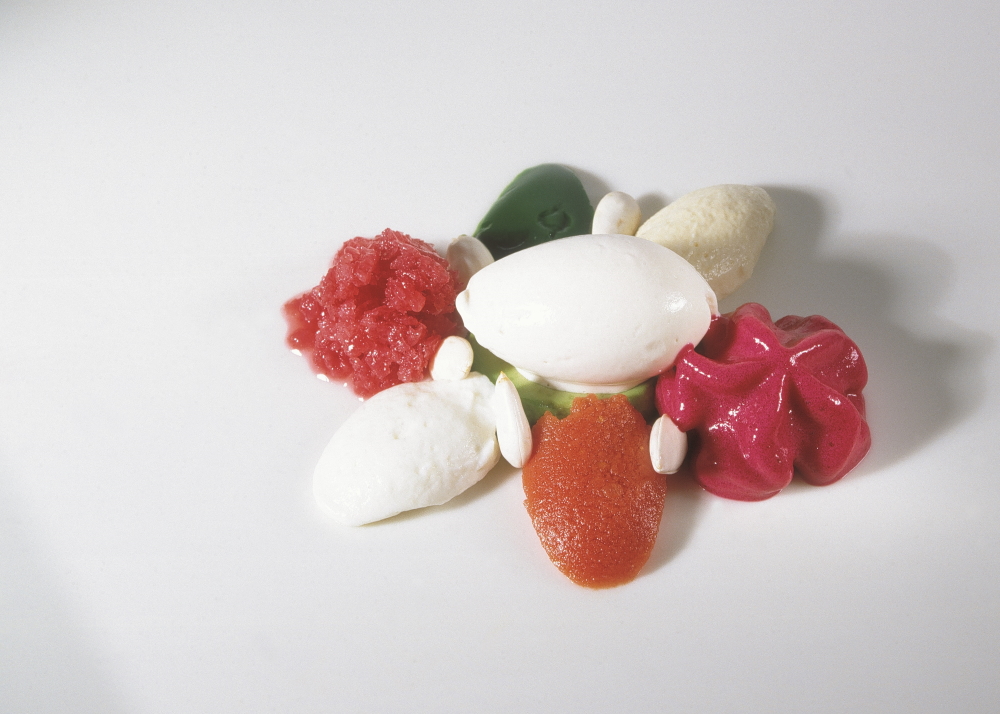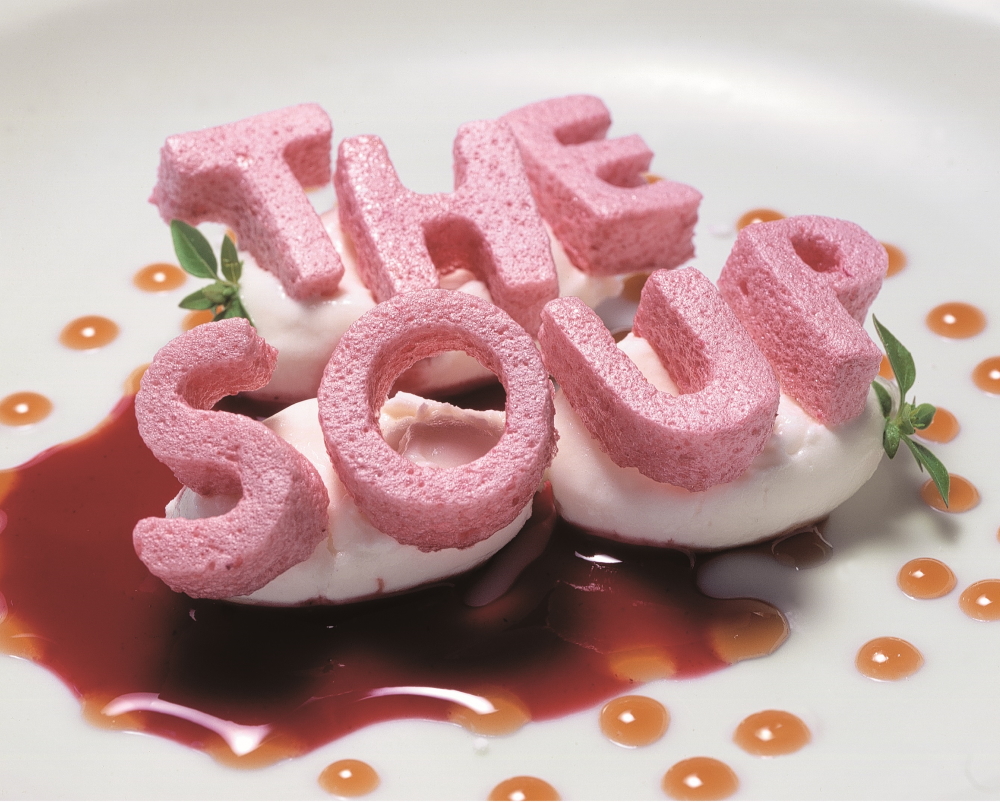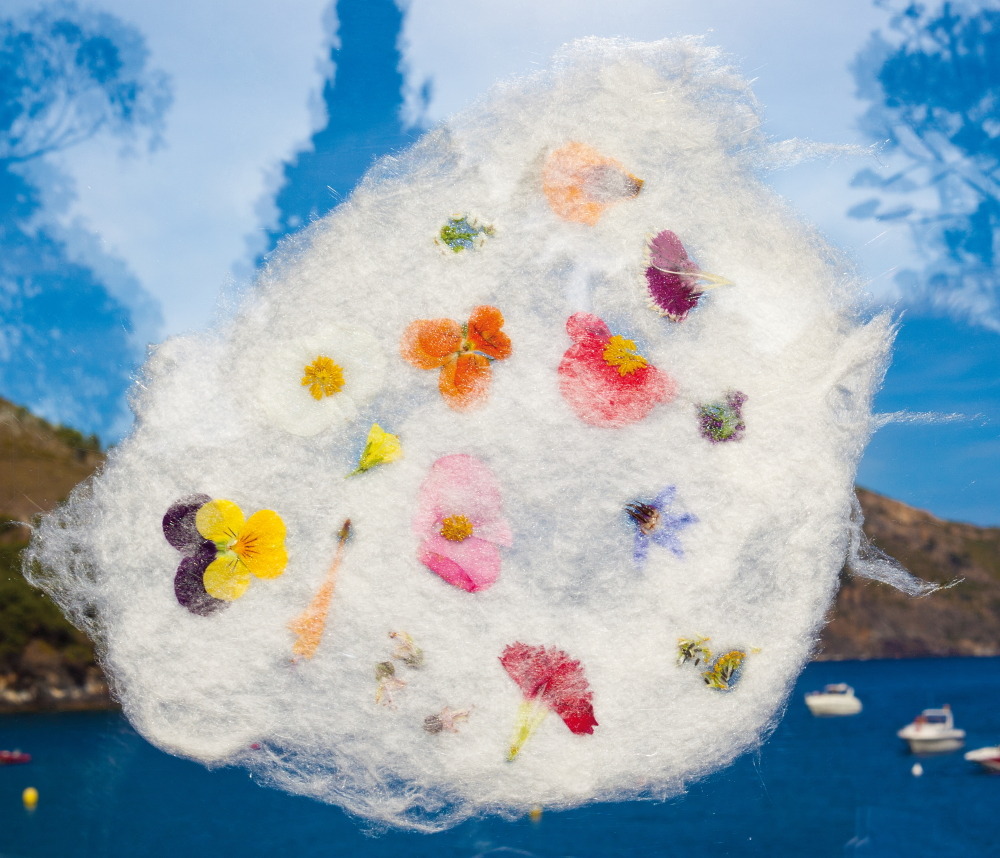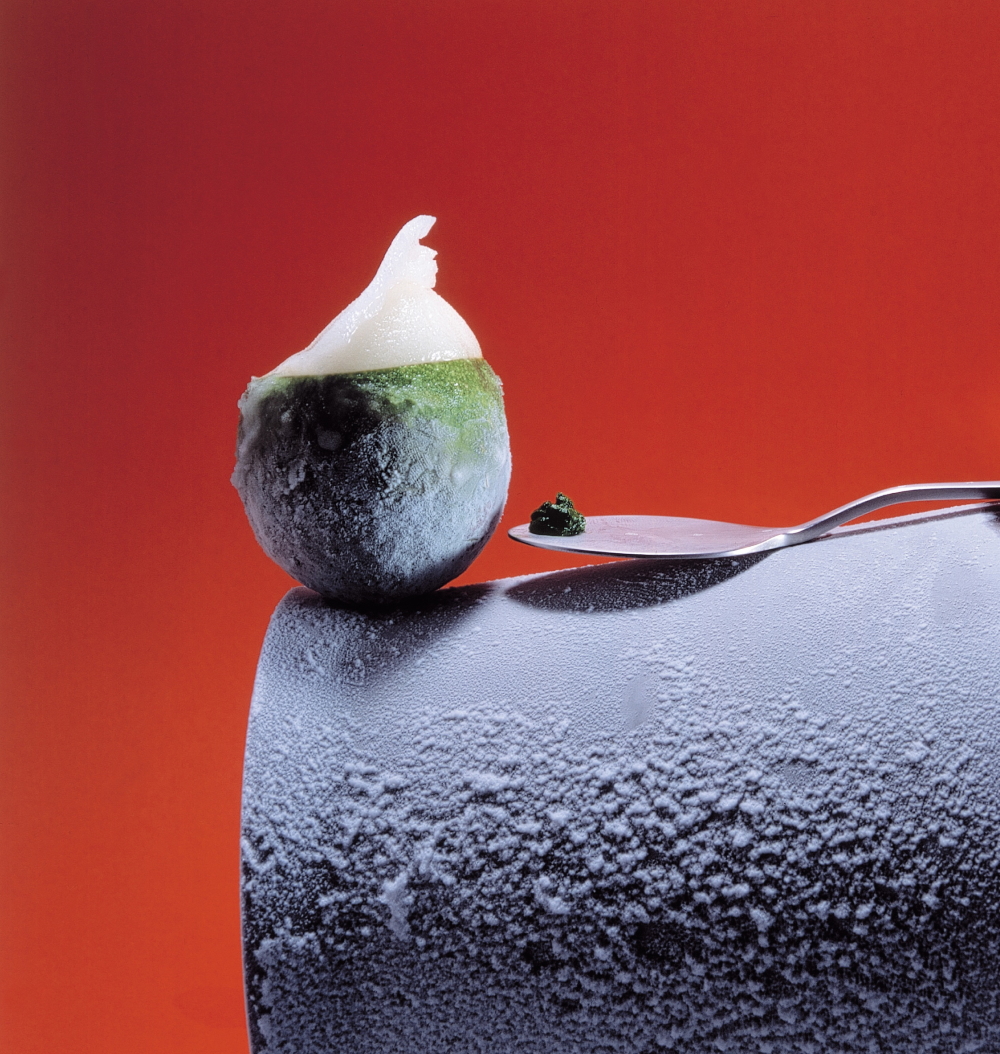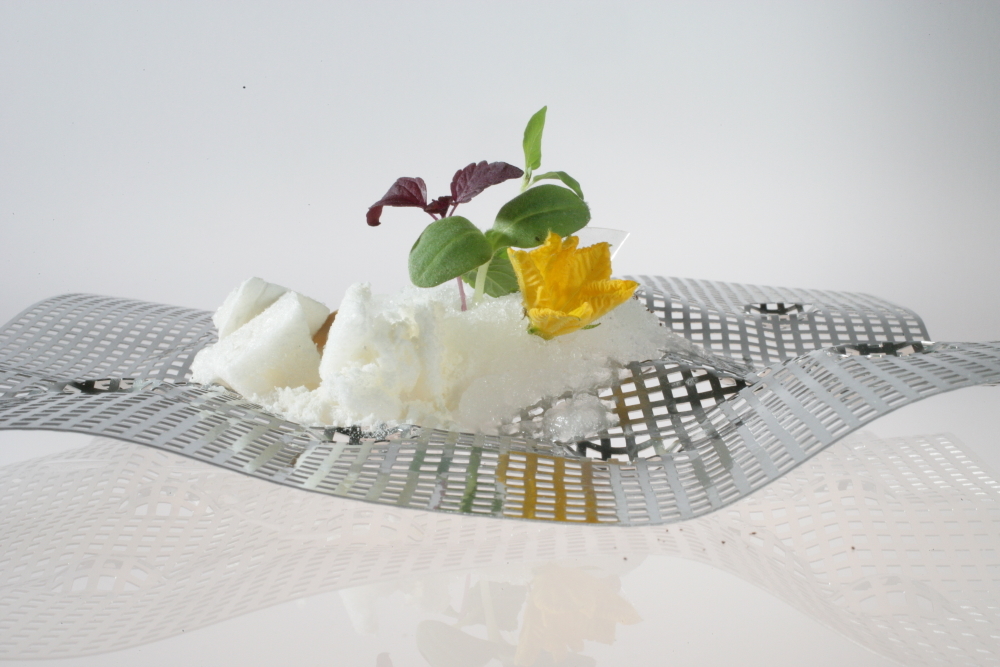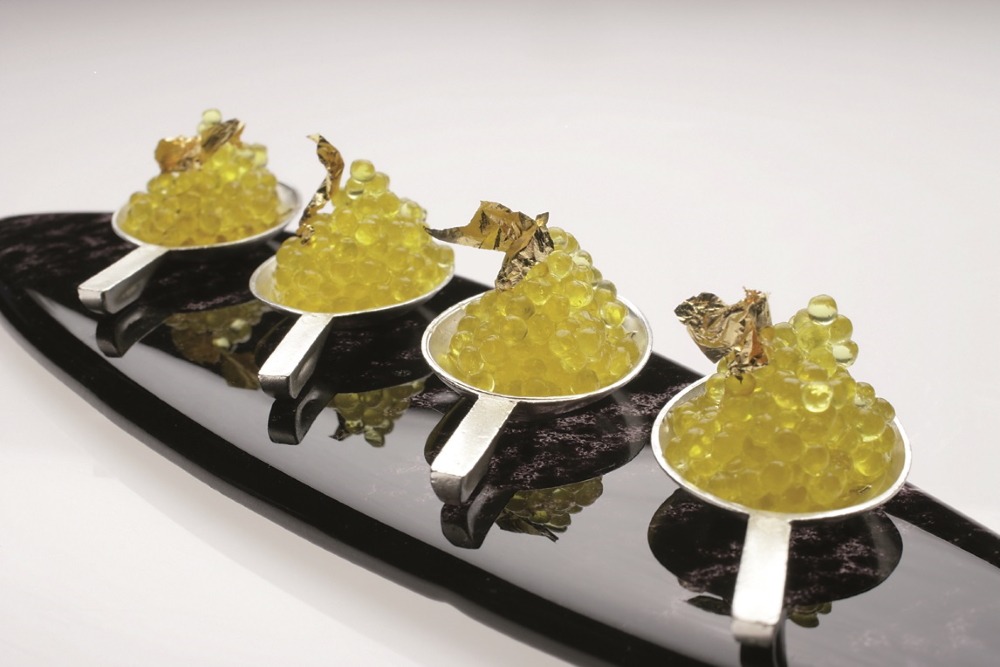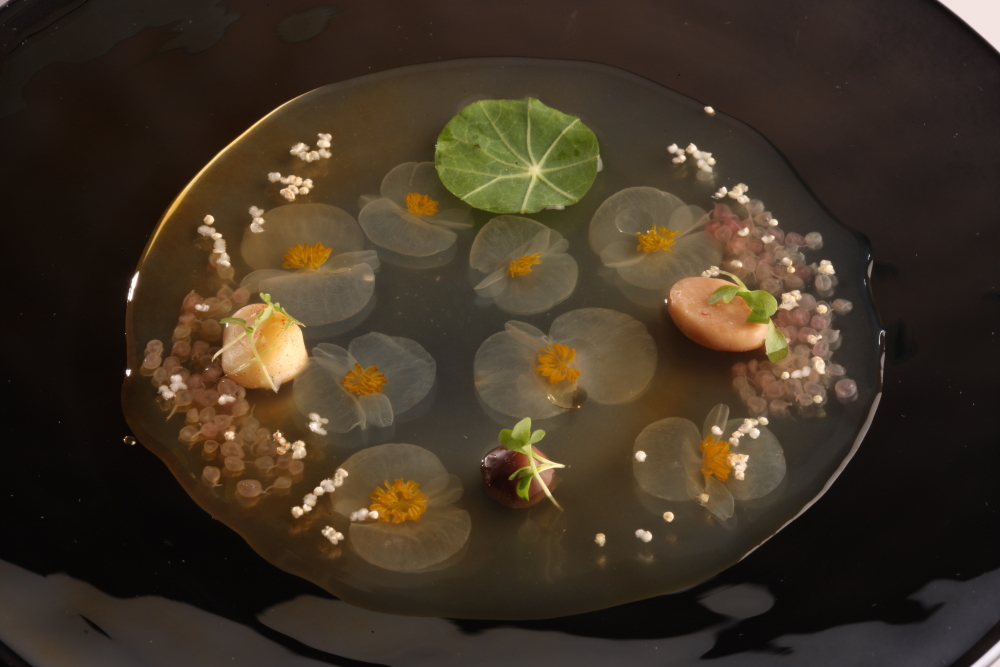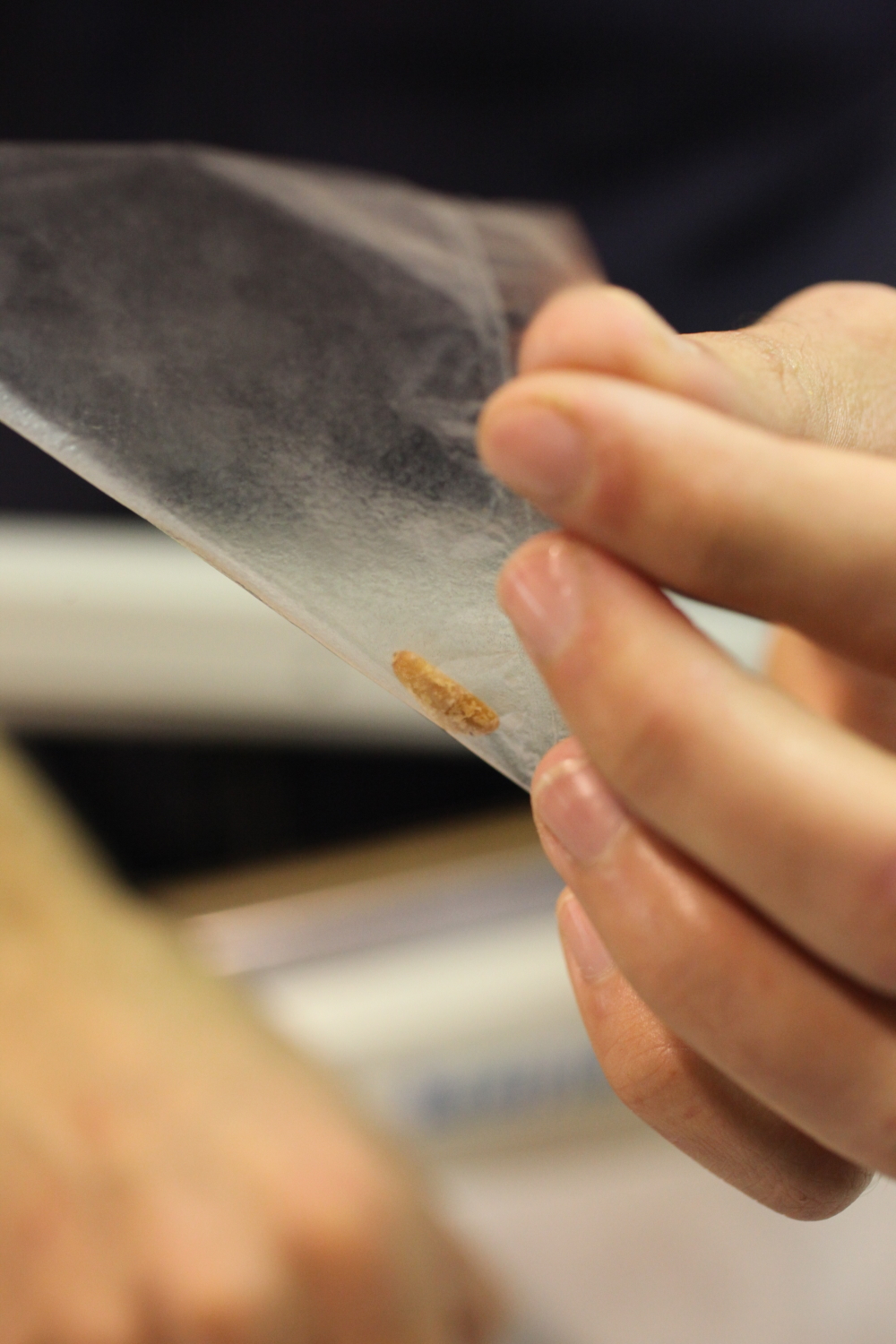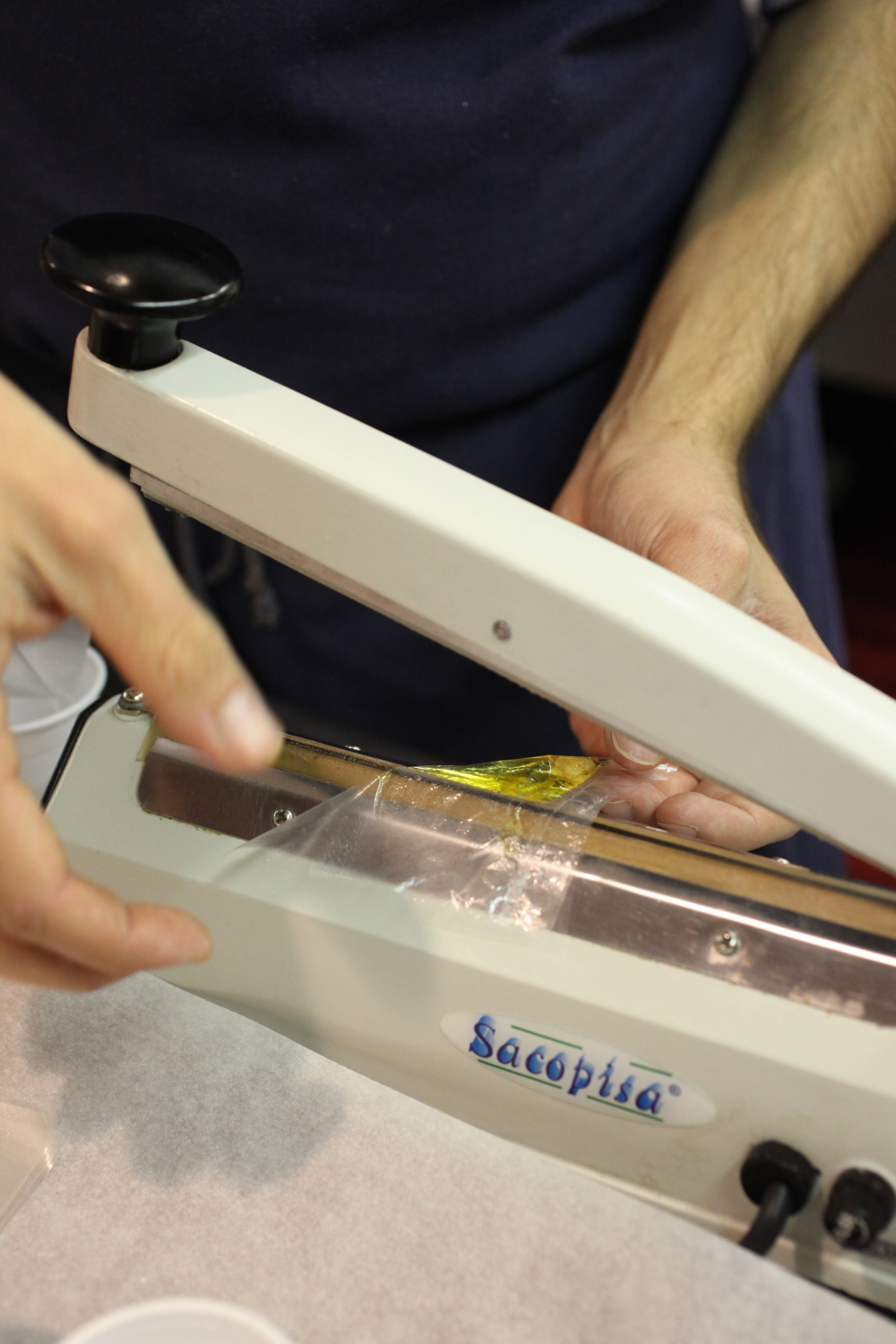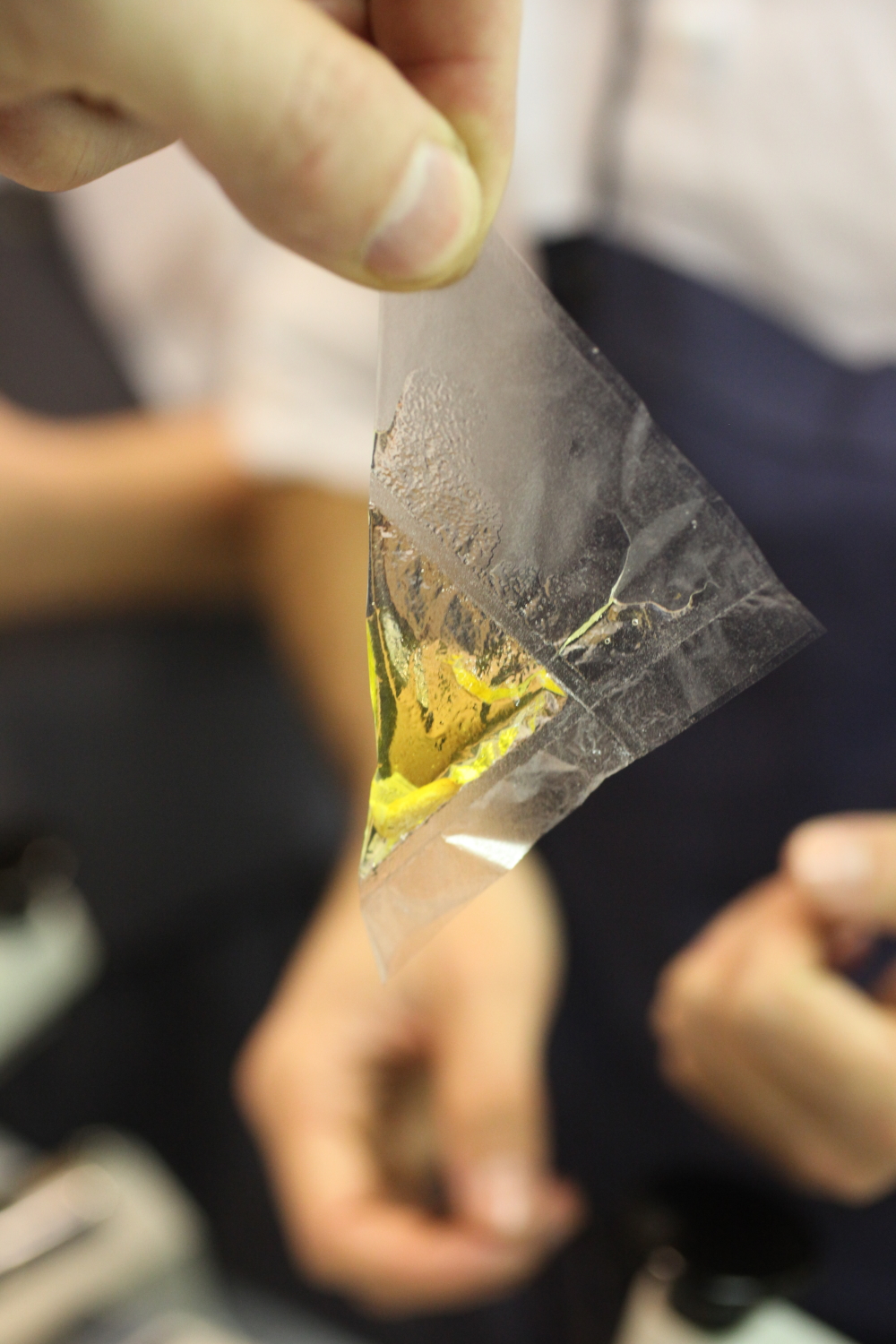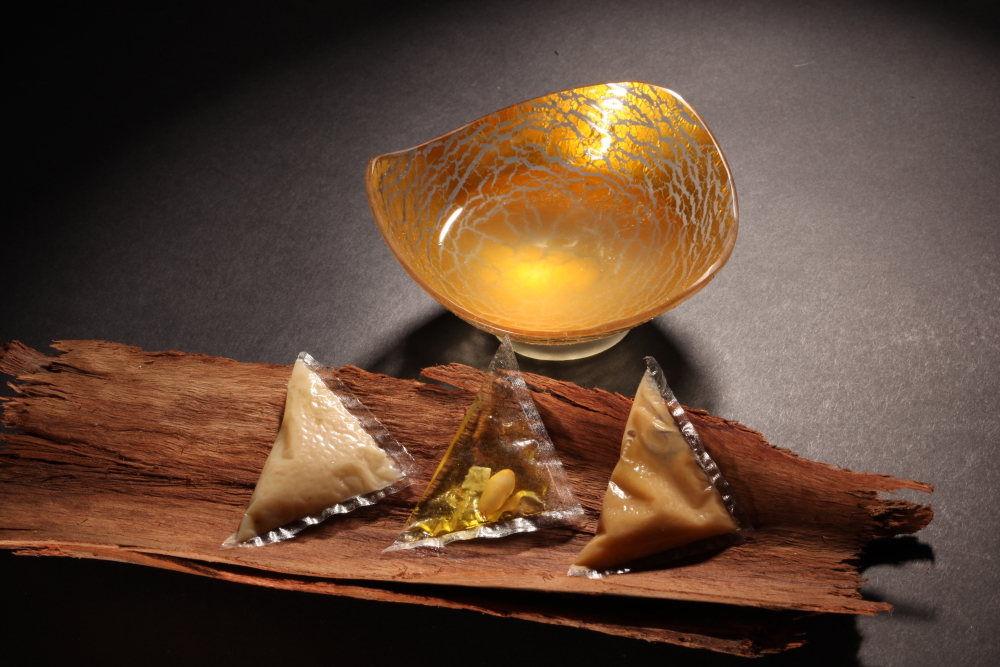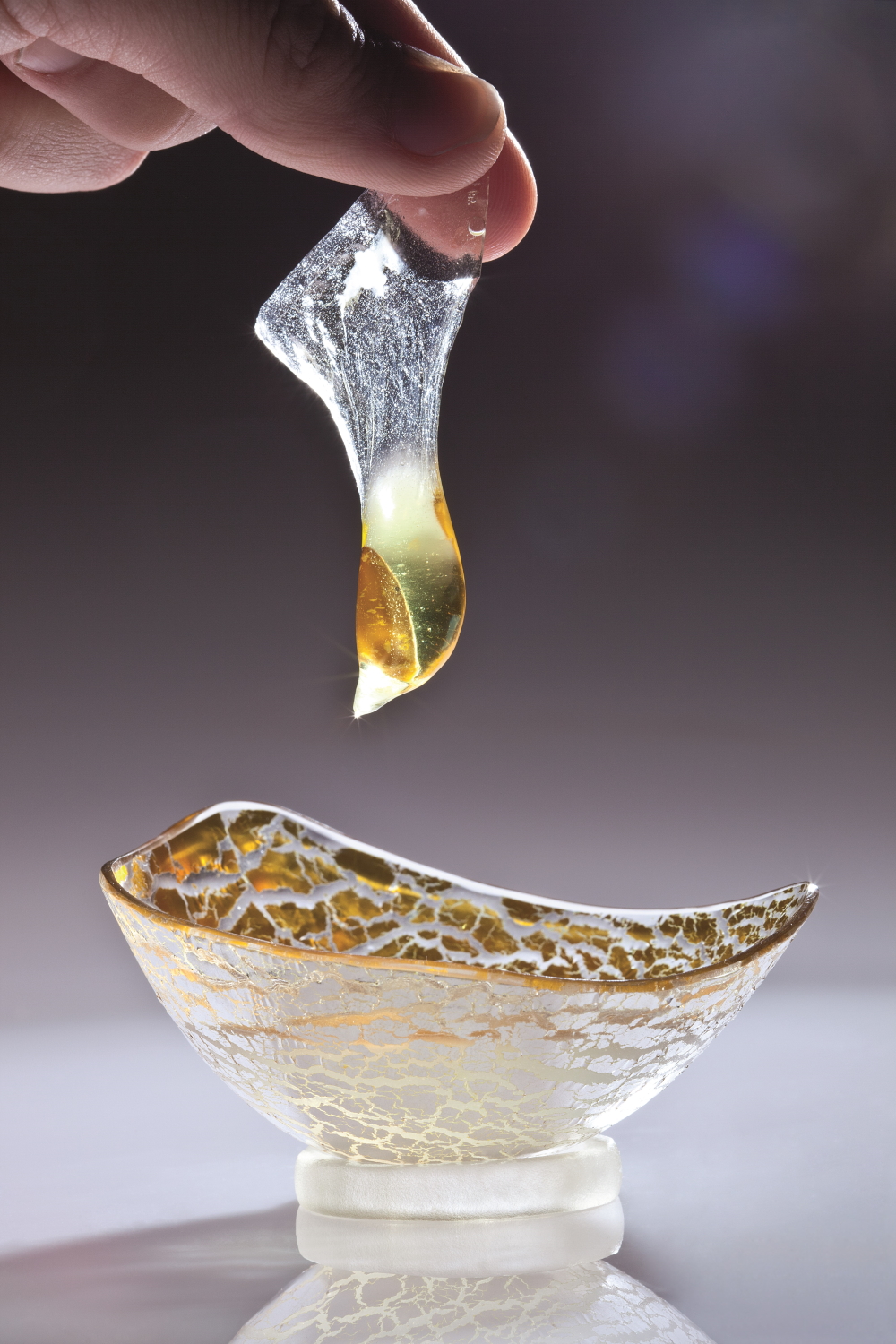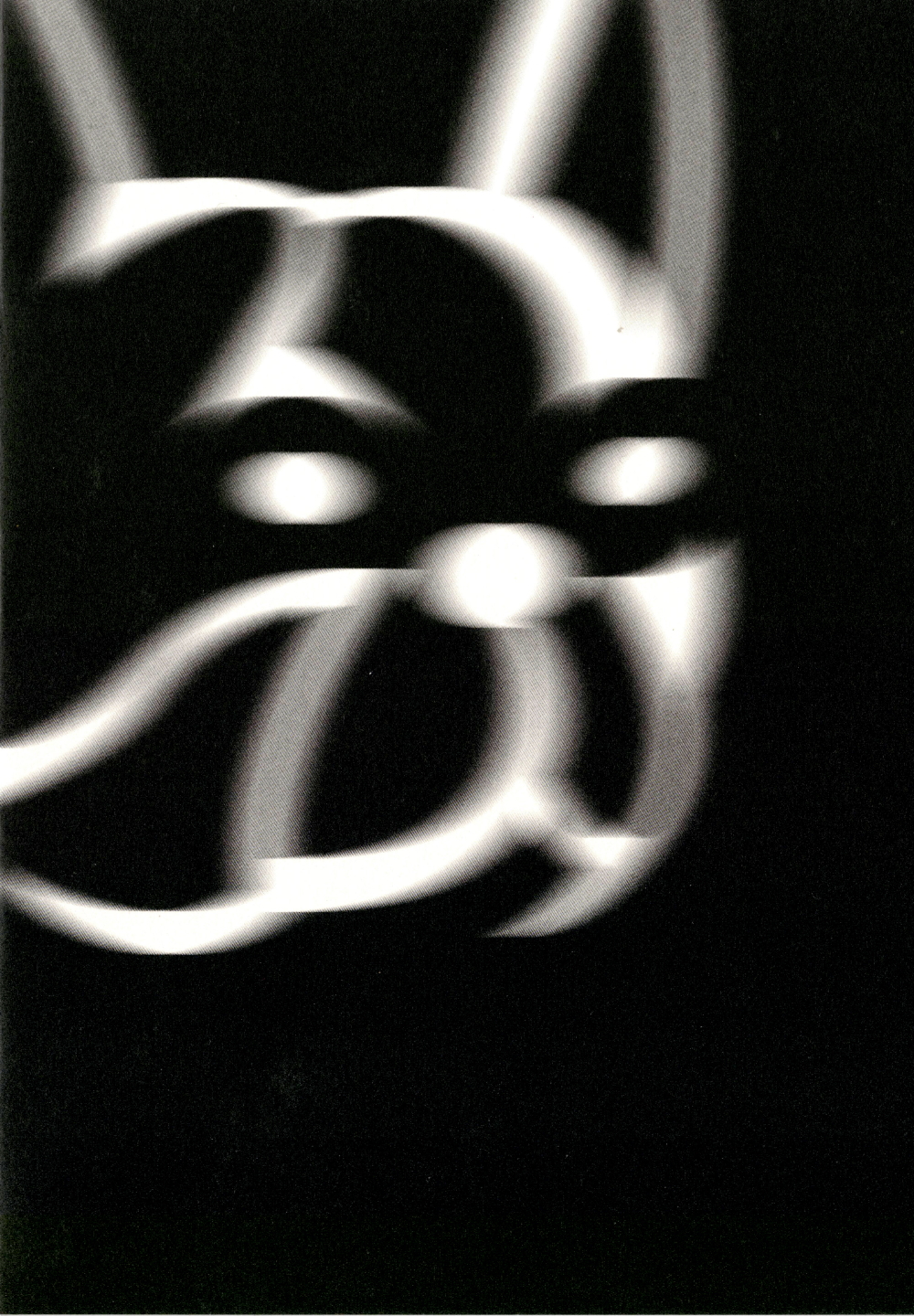Ferran Adrià
gastronomy visionary
Spain
„The Salvador Dali of the kitchen“ (‚Gourmet Magazine‘). „Pioneer of Molecular Gastronomy“. „Cooking-reconstructivist“. Various catchy phrases were given to Ferran Adrià in trying to describe him and his stellar special skills. Fact is: Because of his revolutionary cooking ‚elBulli‘ at the Costa Brava became the legendary place-to-be of the international gastronomy avant-garde! Its exceptional position is confirmed by occupying the first place on „World’s 50-Best-Restaurants“-list by the prestigious ‚Restaurant‘ magazine five times. After decades behind the stove, (one of) the most influential chef(s) of the 21st century ventured into new terrain of his genre.
Ferran Adrià
gastronomy visionary
Spain
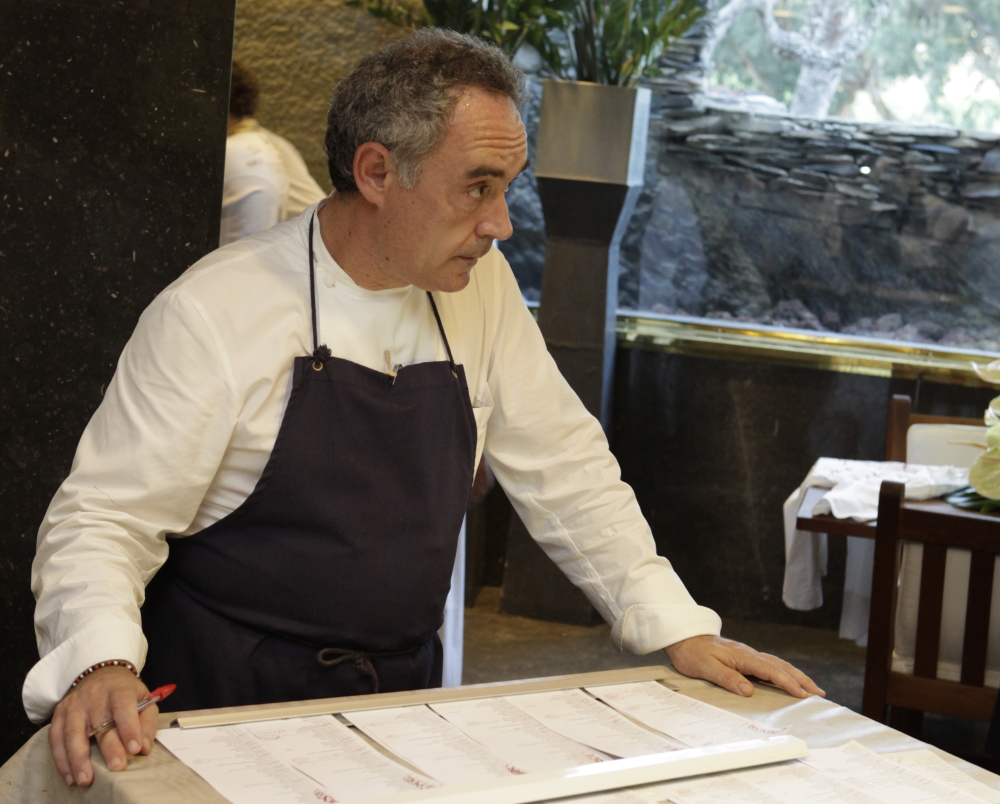
Dishwasher. Cook. Line cook. Head chef. 3-star Michelin cook. Two times participant in the „TIME 100“-„list of the most influential people in the world“. Coverstar of ‚The New York Times Magazine‘ and the ‚Le Monde‘ supplement in 2004. A fast-track career for the eldest son of a master painter and a housewife who was born on May, 14th 1962. At first he made an apprenticeship as preparation for the study of business administration. „I never wanted to become a cook“, he confessed in the „Best and Beyond“-series of „The World’s 50“-site in 08/2017 by looking back at his first jobs in gastronomy in the early 80‘s. But all turned out differently. He came to world fame with dissampling the fragments of a dish by „transforming all its ingredients or part of them; then modifying the dish’s texture, form and/or its temperature. Deconstructed, such a dish will preserve its essence... but its appearance will be radically different from the original’s.“ (The Guardian). „My goal is to provide unexpected contrasts of flavour, temperature and texture. Nothing is what it seems. The idea is to provoke, surprise and turn eating into an experience that supersedes eating."
When the legendary place of pilgrimage of gourmets became „a monster that threatened to devour us“ (Adrià), the impresario of gastronomic innovation and his partner, Juli Soler, drew a line under this chapter on July, 30th 2011. From the „ashes“ something new rose. Prior to its public starting point Ferran Adrià who has no university degree but four honorary doctor degrees taught a culinary physics course at Harvard University together with Albert. Then the new venture, financed by the elBullifoundation, began in 2014 at the same old site. The building houses cooks, programmers, designers, historians. They work in various sections like „Bullipedia“, „the encyclopaedia of the fine dining sector in the restaurant industy“. Or at the research laboratory „elBulli1846“ that is based on the spirit of „creativity and innovation, risk and freedom, passion and effort, ethics and generosity“. The former „bulliLabs“ will be turned into a public archive, featuring over 40.000 pieces of recipes, kitchen utensils and more. Plus a museum possibly...
Señor Adrià is the author of several bestselling-cookbooks and plans to publish a kind of encyclopedia about the history of gastronomy and food that started with „What is Cooking?“.
Ferran Adrià is married, has no children of his own, and lives in a 60-square-metre flat. He is said to be a nice, unassuming, regular guy, leading a strictly ordinary life, working 15 hours a day, 330 days a year. Renowned British daily newspaper ‚The Guardian‘ called the studious Spanish not only „the most imaginative generator of haute cuisine on the planet“, but „an artist, a scientist, an inventor, a stage director, a designer, a philosopher and an anarchist“ too.
Interview March 2022
Feeding creativity: world famous chef turned scientist
INTUITION/IMAGINATION
“Intuition is the key to everything“, said internationally acclaimed filmmaker David Lynch („Twin Peaks“). „I think you could have an intellectual ability, but if you can sharpen your intuition, which they say is emotion and intellect joining together, then a knowingness occurs.“ What sparks intuition for you, is it temporary or can it be engaged anytime?
If we look at the definitions of intuition, we can understand the answer to this question. Intuition is the ability to understand things instantaneously, without the need for reasoning and, from a philosophical point of view, it is the intimate and instantaneous perception of an idea or a truth that appears as evident to the one who has it. Consequently, it is always present... It is often thought that "being creative or innovative" is a matter for geniuses, and such thinking limits the ability to develop the creative or innovative potential of an individual or a team. We must get this belief out of our minds and be clear that every human being is, by definition, creative, i.e. has creativity, a purely human capacity linked, in turn, to symbolic thinking, to the possibility of associating a concept with an object, of transforming a sign into an idea. This symbolic capacity is the origin of other very important capacities, such as human imagination, fantasy, intuition and ideation, all of them capacities to conceive ideas, to project them in the mind and then, if the opportunity arises, to put them into practice or into reality.
How does intuition present itself – being a gut feeling or a suspicious impression?
Presentiment means to sense or have the impression that something is going to happen. To guess something before it happens, because of some indications or signs that precede it. Suspicious has more to do with the person and his or her way of conceiving and approaching these intuitions optimistically, pessimistically or sceptically. Depending on the objectives that are set, all forms can be used in creative processes.
Do you visualise something spontaneously in your mind’s eye - maybe in dreams?
The mind must always be ready to grasp, to visualise, to understand, to devise...even in dreams....
For example, for a chef it is essential to have a psychological palate, to mentally visualise what the gustatory result of a creative result in cooking is. It has to do with understanding things instantaneously, even without the need to reason it out - although it can be done later -, but for this you need to be very well trained on a sensory-perceptual level and have a great experiential background that generates your own mental archive.
Will any ideas be written down immediately and archived?
The creative team at elBulli documented and recorded everything they did from the very beginning, and it was vitally important. Each note, each image, each file... entailed a reflection that made it possible to analyse both the results and the creative process itself, and thus go further in the search for new paths and the limits of the gastronomic experience.
In the permanent exhibition at ‘elBulli1846’, elBullifoundation's headquarters in Cala Montjoi (Roses), where elBullirestaurant has always been located, you can enjoy an installation dedicated to our creative record: 160 notebooks and more than 15,000 documents with notes, files, drawings, photos, graphs, maps and videos made by the creative team that offer a unique archive of the record of all the creative processes carried out throughout the history of elBulli.
What if there is a deadline, but no intuition? Does the first fuel the latter maybe?
Pressure always accompanies creative and innovation processes. The difference is when you do it on commission and have to meet deadlines. These are processes that require constant dedication and a great deal of organisation of the work and the recording of progress or failures as part of the learning process. You always have to be alert and, of course, know how to cope with the pressure. Hence, achieving a high level of creativity and/or innovation is within the reach of very few.
Are great ideas based on intuition or by almost endless trials and errors that result in constant developments up until the final result?
Ideation is a part of the creative process, but it leads to nothing if it does not materialise. Most of the great creative/innovative results are produced thanks to the tireless effort of trial and error. That is why it is essential to date everything that happens during the processes, to analyse, to reflect, to question oneself continuously...
World-famous guitarist Carlos Santana said to me, when the “sky” opens and sends you a brainwave one has to grab that special spiritual moment for realising it before the clouds darken all again. What do you think about that?
Not all creative processes are the same, in fact, I think that no two creative processes are the same.
I have spent a lot of time over the last few years analysing the creative processes of different disciplines, to understand what they have in common and what differentiates them. There is a context around creation in which we can find creators from different fields without differences, but the processes can be infinite depending on each case, because they are already infinite within the same discipline.
In short, I think I admire Carlos Santana's creative talent and I understand his approach in this sentence, although I am sure that he has faced a multitude of different creative processes during his very great professional career.
Does every idea exist immaterially already and just has to be put into effect, i.e. is creativity in its profound purpose basically about transferring dreams into reality?
It doesn't have to be, but in any case we should first ask ourselves what we mean by a dream. The meanings of this word can be confusing, although we could agree that to fulfil a dream is to make a project, a desire, a hope that had little or no chance of coming true. I think that to fulfil your dreams you do not necessarily have to obtain creative or innovative results and, in fact, a creative process is the set of successive phases of the action of a natural phenomenon or an artificial operation to give rise to things that do not exist and/or to combine things that exist to make something new, but not necessarily to turn a dream into reality. However, the objectives of any creation can be many and, therefore, there may be room for a philosophical reflection that seeks to make an individual or collective dream come true, for example to create a "solution" to eradicate hunger in the world.
INSPIRATION
Does inspiration for you reveal itself in a kind of clear and complete vision so that you just have to capture the fantasy in a way that’s authentic to your creativity?
Creation has more to do with the scientific method: control, discipline, constancy, order, scientific attitude and experimentation (trial and error) than with divine inspiration, luck or genius.
In short, we must not confuse the moment of inspiration with the techniques/methods based on inspiration, insofar as we observe stimuli (physical or mental) from which we drive and guide our creative activity, often drawing on research and its specific techniques/methods, and others simply by observing and asking ourselves questions.
Thus, at elBulli, inspiration was considered a creative method when there is a systematised process and recurring stimuli to create, for example through contact with other cultures.
For this reason, at elBulli we took the strategic decision to close for six months of the year, which allowed us to make a multitude of trips that were considered to be an enabler/activator of creativity.
We could also name other starting points used as a reference to activate this creative method, such as nature, art and other creative fields, everyday life or the senses as a starting point to create, to name a few elements not necessarily linked to gastronomy.
However, I repeat that in order to bring it all down to earth, a systematisation of the creative processes is needed, where those inputs become triggers/resources for a much more complex creative process that leads to a successful result.
Do calm and relaxation prove the most suitable or does pressure fire up creativity?
As I have said before, everything can vary from one discipline to another, from one field to another, and each creative or innovative process is also different and has or can have its own conditioning factors that differentiate it from others. For example, the scientific teams that have worked against the clock to find a vaccine for COVID-19 have felt the pressure in every single second of the process, which must logically have been replete with many trial-and-error moments.
In our specific case at theBullirestaurant, the fact of closing for six months each season meant that during the winter closure it was possible to create many days in a row, many hours each day without the pressure of daily service. On the other hand, the fact of closing at midday from 2001 onwards also made it possible to create each morning in the restaurant itself with greater peace of mind.
Therefore, the search for time to be able to "reset" the creative activity was constant.
At the same time, we considered that time could not be wasted, because it is a scarce resource, and together with the pressure - or self-pressure - to open a different restaurant each year than the previous year, it formed a necessary balance to achieve the desired creative level. We must not forget that our aim was to be avant-garde, so we are talking about an extreme level of creativity where we are always walking on the edge of failure.
How do you separate the good from the bad and which ideas are worthwhile to be explored further or whether one idea has the potential of being outstanding really?
There are different profiles and levels within creative teams. Being a good product researcher with creative possibilities is not the same as being a good cook-researcher who is capable of proposing countless variables/tests around an idea, or being the leader of the creative team whose duty it is to make the strategic decisions that guide the processes.
There are different paths, hence the importance of knowing how to date everything. The creation of a creative/innovative archive is fundamental to be able to order all the work done, even that which at first seems to be invalid, as it may happen that an idea is put aside because it seems to have no path to follow and sometime later it is recovered because in another creative process it recovers all the sense that it seemed not to have initially.
In any case, the leader of a creative team must know how to maintain the perspective of what makes up their own personality and identity. This is how at elBulli we managed to develop the ability to build a bubble around ourselves against subjectivity, which allowed us to isolate ourselves from sensory tastes, which are basically subjective, and thus make decisions and measure creative achievements objectively. It was for this purpose that creative audits were developed, and thus evolutionary analysis, which allowed us to reflect on what had been created from two different perspectives, one through a more immediate analysis and the other from the historical analysis of the creations.
What key characteristic does an idea need to be viable i.e. does it have to appeal to you personally or promise commercial potential/fulfil certain needs?
Each field, sector, discipline or company requires a different level of creativity and there can always be different levels and also different objectives.
Expressive creativity is carried out in a free and spontaneous way, that is to say, without established requirements and allows an expression of the emotions and ideas that circulate in the person who carries it out. Productive creativity, on the other hand, consists of the elaboration of a product or service through the use of skills and techniques and requires a real application; inventive creativity uses more imagination with the aim of discovering or inventing something useful with an original view and emergent creativity tries to create new principles, theories or products that change the paradigm on which they act.
Moreover, if the creations are accepted and recognised by the social or professional group for which they have been conceived, we are at another level, innovation or innovative creativity.
In short, creation has different levels and forms, as well as different objectives or final destinations.
In cooking, versioning an existing recipe is not the same as creating a new recipe; we are talking about different levels of creation. Nor is creating a new recipe the same as creating or introducing new elements (products, tools, techniques, concepts...) that give rise to one or multiple new recipes. The ways of innovating are different, while in the first case we focus our efforts on creating from the result, in the second case we focus on creating new resources to give rise to one or several new results.
Understanding the highest creative level as the creation of a style of its own, my selection was always very demanding in that I sought to open up new paths for others to follow.
Do you sometimes revisit old(er) ideas (especially in tough times of need)?
Once again, the importance of dating everything that happens in creative processes, both in terms of their context and their processes and results, comes to the fore.
Many large companies forget or are unaware of the importance of carrying out creative or innovation audits and of generating an archive of all their projects, whether successful or not, to the point that the headquarters of one company carries out a project that has already been developed by another headquarters of the same company in another part of the world. This leads to a lack of efficiency that is vital in the world of creation and innovation.
It is not so much a question of having options in moments of creative blockage, but rather that in order to move forward, it is essential to analyse the path travelled and archive it so that it can be continuously reviewed to understand one's own creative evolution and to have all the pieces of a puzzle that can vary according to each creative process. As I said before, an idea that today seems discardable may be of great value in the future. It is not for nothing that there are many historical innovations that were ahead of their time and proved successful even after the death of their creator and promoter.
How long do you ponder an idea before creatively working on it?
One of our main characteristics was that we were never dogmatic, we questioned the status quo and we were always committed to reflection and maximum freedom of thought, so that everyone could build their own identity.
Reflection was a constant at every stage of the creative and innovative process, even up to the moment when the final elaborations had been completed. Again we must speak of different levels in the creative pyramid. We worked in our workshop during the winter months in the search for new products, new tools, new techniques, new concepts, which opened up new creative possibilities. With all this, we faced a new season in the restaurant and during the mornings we reflected on each of these partial achievements in order to construct intermediate elaborations that would later give rise to the final elaborations that were tasted through a tasting menu. But the composition and the order of that menu is another higher level that is not within everyone's reach, and that is why it was my final responsibility to reflect once again, with a global vision that was fundamental for the gastronomic experience that the client lived.
It is something like creating letters, to then create words and then phrases that give rise to a final composition: cuisine understood as language. And at elBulli, thanks to a deep and continuous reflection on our creative processes, we were able to create a new language that changed the paradigm of an entire sector.
Do you check what colleagues/competitors are up to/your role models contrive(d)?
I have always had great respect for the work of the chefs who preceded me and of my contemporaries as well. But I made the vital decision to follow my own path under the motto "to create is not to copy".
As I said a moment ago, at elBulli, we were able to create a new language that others took as their own to continue evolving and enriching it, thus creating a movement that came to be called "techno-emotional cuisine".
But, in addition, the work carried out in the world of cuisine and gastronomic restoration transcended into other fields, achieving recognition that demonstrates the influence that was generated beyond the sector itself. Recognition flatters and feeds vanity, but it is subjective and ephemeral. The most beautiful thing is that theBullirestaurant opened up paths that others have followed.
Having said that, it is clear that in order to create/innovate you have to know what already exists, otherwise you run the risk of copying. However, it is always important to know, learn, understand, discover, adapt, adopt... Sometimes, one's own creative evolution also takes in inputs from other places, from other professionals, from other disciplines... that allow you to go further. There is nothing wrong with that, as long as it is honestly acknowledged.
This is why I insist on the importance of carrying out creative audits. In our case, I must point out that our objective was to be avant-garde and, therefore, every season we subjected the results to an evolutionary analysis to decide which elements were new compared to previous years. This annual review was essential to restart creativity and to start each year with a new project, different from the previous one, and not copy ourselves.
CREATIVITY
Which time/place/environment suits your creative work process the best?
In 2000 we created the first creative workshop in the history of gastronomic catering. This was undoubtedly a strategic decision that multiplied our creative capacity, although the workshop concept had been born many years before. In 1991, after holding a series of conversations about art and creativity, the sculptor Xavier Medina Campeny, a client of elBullirestaurante, invited me to work in his workshop in Palo Alto, in the Poblenou district of Barcelona. It was the first time I was in a kitchen creating, without the need to satisfy a restaurant service. It was an unforgettable experience, as he was able to see first-hand the way a creative person works and to understand that there are genes in the creative processes of sculpture that can be transferred to the kitchen. Subsequently the workshop concept evolved and took on different, occupying different spaces beyond the restaurant's own kitchen, until, at the end of 1998, the ideal location was found: a space inside an 18th century palace next to the Boqueria market, also in Barcelona, which is essential for the daily purchase of products. Thus, just over a year later, ‘elBullitaller’ was born.
Therefore, it is logical to think that, although the creative processes have many stages and these take place at different times, places or environments, being able to work concentrated in the workshop or in the restaurant away from the pressure of a service is the ideal framework for creative work.
Which path do you take from theory/idea to creation i.e. how do you start?
As I explained earlier, our process involved many connections and stages: creating letters, then words, then phrases to create a final composition, the kitchen understood as a language. The phases that made up our creative process were not sequential or linear. The manuals set out the creative process in an orderly fashion: starting with the idea and ending with the creation, the result... I understand that it is set out in this way because the aim is to facilitate understanding, but I think it can also lead to some confusion because the creative process, in practice, responds more to an agglomeration of interactions between phases than to a strict order.
What does your average creative day look like (early bird or night worker)?
One of the keys to our philosophy on innovation is to have a "morning/morning woodpecker" attitude, which means that leading a creative team means being the first to arrive and the last to leave, showing constancy, perseverance and insistence at all times to achieve the objectives by doing things well.
A fundamental first phase for any creative leader is to start the day by dedicating some time to getting organised, so that everything is in order and when the team arrives, everything is planned to be as efficient as possible.
I do not share the idea that creative people are messy people without a clear organisational structure; on the contrary, I think that great achievements require great effort and organisation.
How important are self-doubt and criticism (by others) during such a process?
It is always important to listen to everyone's opinions, as long as they are based on knowledge. However, when you dedicate yourself to the avant-garde, you have to be aware that you are at the forefront of everything, opening up new paths, and it is normal that your proposals are not understood, at least some of them and for a certain period of time. Otherwise, it is difficult to be avant-garde.
By this, I mean that when at elBullirestaurante we created a final elaboration to be tasted as part of a tasting menu, we didn't think that it had to have a success that would be recognised by everyone. Of course, you always try to offer a pleasurable experience, but what prevailed was our search for limits, to break new ground.
Is it better to be creative on your own, only trust your own instincts, or in a team?
It depends on each discipline, on each person, on each project...
I am a person who believes very much in individual work, as it allows us to extract the best from each other, while avoiding being contaminated by the opinions or actions of others.
80% individual work and 20% team work, because it is also important that second part of collective work to share, discuss, connect...
Does age/life experience help with creativity or is a younger mind more creative, ‘cos it’s fresh and untouched by experience? What about social/cultural heritage?
Creativity is not at odds with age or experience, on the contrary. The key is connected knowledge, I think... And this has nothing to do with age, but with study, learning.
It is essential to enjoy studying, because if you want to advance and find something new and successful, you need to be well prepared and know the history of your discipline very well, as well as having a good generalist culture that knows how to approach problems in a holistic way and, above all, questioning and questioning everything, moving away from dogmas.
What is your personal approach/motivation/concern regarding creative activity?
I believe that it is all about conscious understanding, being aware of learning and managing one's own learning. This makes us free. In this way, we can not only understand what is around us, but also question and change it. It is a tool that allows us to follow the cycle, to continue to understand, and also to act, developing new solutions.
If you’d make a pie-chart: what is your satisfaction based upon - a) self-realisation/ personal compliance, b) artistic recognition or c) commercial success & fame?
I have never sought fame or awards, but they are always welcome and accepted as a driving force to continue growing professionally.
In my case, everything has arisen from my work in the world of cooking and gastronomic catering, but, as I mentioned earlier, the key was that this work has transcended to other fields, achieving recognition that demonstrates the influence generated beyond the sector itself.
Recognition flatters and feeds vanity, but it is subjective and ephemeral. I repeat that the most beautiful thing, and that is what I keep, above all, is that theBullirestaurant has opened up paths that others are following.
How does a creative find his/her own style/possibly unique way of expression?
Progressing towards the progressive creation of an increasingly codified language of its own, which on some occasions may establish relations with other languages of other disciplines, but which, in any case, means the reaffirmation of an identity of its own.
In my discipline, the highest level of creation is undoubtedly when the chef achieves a set of features and creative characteristics of his or her own gastronomic offer that give it a unique and differential identity compared to that of other chefs.
Is craftmanship important or should creatives be able to work 100% unloaded?
I think we have to get away from the belief that, in order to innovate, we always have to use advanced technologies. First of all, we have to ask ourselves what technology is. When we say "technology" we generally think of information technology: the Internet, software, or telecommunications. But technology goes much further than that. Looking at the definition of this term, we see that it is the set of theories and techniques that allow the practical use of scientific knowledge. If we simplify it, we can say that technology is equal to theories + techniques + procedures + tools.
According to this definition, there is no doubt that innovation and technology are two very different things, since innovation encompasses more than the theories and techniques of technology. Innovation includes, among other aspects, ideation, creation and management and, certainly, in all of this, technology can be a good ally to achieve success by improving each of the sub-processes that constitute it. Having understood this, we can understand that not all innovations are technological, but that technology is fundamental to innovation.
Can routine, experience and professionalism make up for lack of creativity?
I don't think so, although experience and professionalism are an intrinsic part of the individual personality and collective culture of a top-level creative team. And more than routine, at elBullirestaurante it was essential to be very well organised. This allows you to have a great capacity for adaptation and flexibility in the face of change, which was fundamental to fit in with multidisciplinary teams and also to adapt to the different changes that were applied, precisely to avoid routines. Change itself was an essential aspect of the organisational culture and allowed, for example, the change of opinion or action in relation to something to be assumed as normal, in order to achieve improvement.
If problems occur during the creativity or one’s stuck, how can that be solved?
There are resources that, without being techniques, methods or tools themselves, help to overcome the "barriers to creativity*" and/or that agitate and stimulate the creative capacity. They are all those resources (material or immaterial) that act by activating or awakening creativity (e.g. detecting a tendency, or having a clear purpose such as wanting to improve something), or unblocking it (meditating, taking a period of rest).
Are a never give up attitude and persistently hanging on necessities for creatives?
Once the decision is made to undertake a creative activity, it is time to not only want to do it, but to do it. This is where motivation and initiative are essential. Once a process is started, the attitudes that prevail are the depth to philosophically reflect on creation until the whys and wherefores are found, and the perseverance to resist the frustrations that emerge during the process of realisation. To all these we must add high self-esteem as an empowering element. This is due to the fact that self-knowledge and the recognition of one's own abilities favour the rest of the creative attitudes. In short, being persevering, pursuing creative objectives with dedication, finishing what has been started, working with constancy, trying again if it doesn't work the first time, is crucial to increase efficiency and creative productivity.
Which is better in the development process: speed and – if that’s possible - force creativity i.e. grasp the magic of the moment, or a slow, ripening process when it comes to implementation and elaboration?
No two creative processes are the same and, therefore, different situations can be combined.
On the one hand, forcing creativity can be a good way of obtaining more options on which to advance, based on trial and error and a great mental agility that allows a large number of ideas to be produced in a very short time, while at the same time it is sometimes a question of external pressure due to having to achieve results in a specific time.
At other times, there is that magic moment in which the creation emerges, although it is almost always the result of previous work and more or less long periods of research and reflection.
And then there are times, when everything happens more calmly, usually because one is aware that the process has a long way to go and must be given the necessary time. Not surprisingly, as a consequence of our self-demanding level of the results to be obtained, in our model we defended as essential the availability of time to be able to carry out the creative work.
„Creativity is the ability to reorganise known factors so that they become novel and fresh.“ Do you agree with British rock-manager Tony Stratton-Smith?
The first thing to point out is that creation does not come from nothing. The history of mankind has accumulated infinite creations that have, in turn, been based on previous ones and that, at present, also serve as a starting point for generating ideas that foster new creative processes. That said, this proposed definition of creativity focuses on a specific level of creation: incremental or evolutionary creation.
We must be very clear that it is very difficult to do something totally new and even more difficult to do something avant-garde and for it to be innovative, i.e. to be successful. Therefore, in reality - and there is nothing wrong with this - many of the creations and innovations may be appropriate and may breathe "that new air", but they are not necessarily original, but rather the result of the evolution of other previous creations.
Should a creative always remain true to him-/herself including taking risks & going against the flow or must one, for reasons of (commercial) survival, make concessions to the demands of the market, the wishes of clients and the audience’s expectations?
Again, there is no dogma that fixes the personality of a creator or a creative team. There may be creatives on both sides, but they will undoubtedly be much more common on the second side, since it is not within everyone's reach to have sufficient economic sustainability to be totally free. Moreover, all creative processes have a context that conditions the work in some way.
In our case, the definition of an innovative business model, developing a galaxy of businesses around elBullirestaurante, offered a bubble of freedom that allowed us to bet on the avant-garde and turn it into a reference point for innovation, within the field of gastronomy and beyond.
On the other hand, the team in charge of carrying out the Galaxy projects developed processes where creation and innovation were also present, but not in such a disruptive way, because they were totally conditioned by the specific project to be developed and by the contracting company.
How is innovation still possible if one has established a distinctive style?
We, at elBulli, continued to push forward with the desire to explore the limits of the gastronomic experience until, in 2010, we realised that we had reached them and it was then that we decided to close elBulli as a restaurant and transform ourselves.
Is it good to be ahead of one’s time even one hazards not being understood at all?
No doubt about it. Above all, if your aim is to be avant-garde, you must assume that you will not always - or almost never - receive rapid acceptance of your proposals, nor will you often be understood. There are great creations in the history of mankind that were ahead of their time and were not successful or recognised until much later. They are something like "innovations in delay".
When does the time come to end the creative process, to be content and set the final result free - or is it work-in-progress with an endless possibility of improvement?
Once again, I must insist that there is great variability in creative processes. In the case of creative cuisine, there are elaborations that continue to evolve over time, for various reasons. Others are defined from the first moment of the culmination of the creative process. The creative focus changes. In our case, for example, while in the restaurant we had to achieve a final result (product and/or service), in the creative workshop the focus was to generate as many ideas as possible in relation to new resources, so that when it came to creating the final result, there were more possibilities when it came to introducing and/or combining new elements in relation to the gastronomic offer. These were therefore lengthy and dynamic processes, where the priority was not the final product that was tasted, but rather the opening up of new paths that could be explored.... and along the way the creative interactions multiplied, offering new options to be explored.
In case of failure or - worse - a creativity crisis how do you get out of such a hole?
With constancy, perseverance, work and organisation. And knowledge... Earlier we talked about the enablers or activators of creativity.
For example, three levels of consciousness operate in our mind: conscious, unconscious and subconscious. In order to create more efficiently, the chef can become aware of the unconscious and subconscious, paying attention to those perceptions about actions and reflections of which he or she is not aware, and which can be used as creativity enablers at any stage of the creative process, and also minimise those personal conditioning factors that can be barriers to creativity. But we could talk about multiple useful resources to activate/unblock creativity when we want to develop different elements, in our case, of the gastronomic restaurant: consuming gastronomic knowledge in all its formats: books, documentaries, blogs, social media, magazines, etc. Travelling to get to know the local culture of a geographical region (both our own and foreign). Visit producers, manufacturers, artisans, distributors, shops and professionals specialising in different gastronomic disciplines (patisserie, mixology, baristas, etc.) and other restaurateurs. Establish interdisciplinary relations, for example by establishing a dialogue with the world of art, science, industrial design etc. .. The options are countless. The difference lies in being aware of all this and understanding the creative system as a whole, bearing in mind that there is a context around each process, with a leader, a team, an organisational culture and resources that must always be kept in mind, including those that can be used as activators in times of blockage.
Did you ever deliver something that you considered mediocre, but was successful?
I cannot talk about mediocrity. Again, I prefer to say that there are different levels of creation and it all depends on the level desired. From the basic level for a cook, which is the reproduction of an existing recipe where creativity is minimal, and most of the time nil, to the versioning of an existing recipe, the creation of a new recipe or the creation of new concepts, techniques and new intermediate elaborations that give rise to infinite future developments.
Success
Why are some people successful and others not - despite the same talents?
There may be different factors, but above all it must be emphasised that for a creation to be successful and become an innovation, it must be managed flawlessly. Innovation navigates within the company and this implies that other systems must be connected to the creative system itself. Ultimately, creations can be innovations if they are implemented as new products, services or procedures, which actually find a successful application in the market or in an organisation, positively influencing the results it achieves. Innovation is, therefore, a much more complex process since, in addition to the creative and implementation aspects of the idea, all the management, marketing, commercial or communication aspects that can ensure the success of this creation are involved.
As a consequence of all this, we can go further and understand that a creative person needs more than his or her creations to be successful, as we must also consider the figure of the receiver or experiential actor of the creation. And, as we have already seen, some creators transcendental for the evolution of humanity did not succeed until after their death.
We can add that, many times, it is not about being the creator of something in order to be successful, but being able to be the first to conceptualise a creation. Who created the miniskirt…?
Should/can one resist the temptation to recycle a ‘formula’ one’s successful with?
If we are talking about the highest creative level, we must face the fact that this implies opening a new path, but as we have seen, there are less demanding levels of creation that allow us to explore the great paths opened by oneself or by others.
Is it desirable to create the ultimate/timeless work, but doesn’t “top of the ladder” bring up the question of “what’s next?” i.e. isn’t such a personal peak “the end”?
Each case is different. In my case, my last step has been to dedicate all these years to understanding our trajectory by carrying out an in-depth audit of elBulli in relation to creation and innovation. But first we had to understand very well what innovation is.
As a result, we realised that there were huge knowledge gaps to be filled in our discipline. Therefore, I have been working on creating a methodology, which we have called ‘Sapiens’ (www.metodologiasapiens.com), that has allowed us to continuously question the status quo and to face great challenges related to the knowledge of the evolution of the history of cooking, starting with understanding what cooking is and when cooking began, as well as gastronomic restoration in general.
At the same time, this immense research and learning has allowed us to connect all the keys to our legacy so that the next generations can take advantage of it.
MY FAVORITE WORK
Vegetable Stew in Textures (1994)
This vegetable stew, in which vegetables are presented in various textures, is an icon of elBulli's cuisine and of techno-emotional cuisine.
Few dishes have probably represented the start of such a revolution, as it marked a new path from 1994 onwards.
